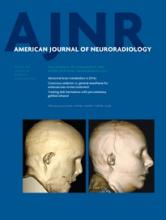ABBREVIATION:
- PD
- Parkinson disease
Parkinson disease (PD) is a degenerative disorder of the nervous system. It is characterized by loss of dopamine-producing cells which, in time, develops into motor system dysfunction. A small portion of PD cases are purely genetic. Currently, diagnosis is based on clinical examination. Molecular imaging is most sensitive and novel techniques are promising; however, their use is largely limited to research. Anatomic imaging is not disease-specific in this disorder, though it may be used to rule out alternative diagnoses known to mimic PD.
History of Parkinson Disease
The description of tremors and other symptoms of PD is found in ancient texts.1,2 The eponym of the disease was bestowed posthumously, in the late 1800s, by Jean-Martin Charcot upon James Parkinson, a British apothecary and surgeon, who described “paralysis agitans” in a monograph entitled An Essay on the Shaking Palsy in 1817.3 PD is the second most common neurodegenerative disorder after Alzheimer disease.4 It is caused by impairment of the dopaminergic system, initially affecting movement. In later stages, cognition and behavior may also be affected.
Pathologically, PD is associated with dopaminergic neuronal cell loss and accumulation of Lewy bodies and Lewy neuritis within affected cells. Clinical symptoms develop when between 70%–80% of the involved nerve terminals have degenerated.5 Prevalence of PD is approximately 1% of the population over the age of 50.6,7 Its reported annual incidence rate is 13.4 per 100,000 in the general population; however, over the age of 60 years, the incidence rate greatly increases.8
What are the Clinical Manifestations of Parkinson Disease?
PD is a movement disorder with a slow onset, frequently presenting initially with coordination difficulties. Later, bradykenisia, rigidity, postural instability, and resting tremors are the dominant features of the disease.9 The time lag between the initial symptoms and diagnosis may be several years.10
A depletion of dopaminergic production may be seen in other diseases as well. Atypical PD, also known as Parkinson Plus Syndromes, represents 15% of patients presenting with Parkinson-like symptoms. However, these syndromes (multiple system atrophy, Lewy body dementia, progressive supranuclear palsy, and corticobasal degeneration) do not respond to dopamine therapy.
Are There Genetic Types of PD?
Initially, the genetic component of PD was questioned, especially in PD occurring after the age of 60.11 In a large twin study examining concordance for PD in twins, no concordance was found.12 However, additional studies found a Mendelian inheritance pattern, especially in early onset PD.13,14 Currently, monogenic PD is thought to cause 3%–5% of all PD.15 Detection of the genes was performed using linkage analysis and positional cloning in families suspected of having a genetic component. The genes discovered to have a link to PD were designated the “PARK” genes.16 The inheritance patterns may be autosomal dominant, as is seen in the PARK1, 3, 5, and 8 genes. Autosomal recessive PD is linked to PARK2, 6, and 7. A polymorphic or multiple genetic form of late onset PD has been described as well.17
The Prion Disease Hypothesis
In recent years, there has been an increasing body of research suggesting that α-synuclein, which accumulates in Lewy bodies in patients with PD, is a prionlike protein. The protein aggregates in a misfolded configuration and demonstrates properties of self-propagation to adjacent cells.18⇓–20 The similarity of genetic forms of PD and prion diseases is stated as an argument on behalf of this hypothesis.21
Is There Diagnostic Testing for PD?
Currently, diagnosis of Parkinson disease is based on the clinically characteristic signs of bradykinesia, rigidity, and resting tremor. Asymmetric onset of symptoms and a response to levodopa are considered supporting diagnostic features.16
What is the Role of Imaging in PD?
MR Imaging.
The role of iron in the pathogenesis of Parkinson disease has been and continues to be investigated.22,23 Iron, which has ferromagnetic properties and is excessively deposited in the substantia nigra of patients with PD, led many to believe that this could potentially be an imaging marker of the disease, especially with T2/T2* imaging.24⇓–26 In addition, more advanced MR imaging techniques have been evaluated, such as SWI27,28 and magnetic transfer imaging.29,30 One limitation of iron-based imaging is that it is nonspecific and may be seen in myriad normal or non-PD patients with parkinsonism.
Voxel-based morphometry uses high-resolution images for the assessment of brain structure. In a study of carriers of PARK2 and 6 heterozygous carriers, an increase in volume of the posterior putamen and the internal globus pallidus was seen, possibly a compensatory reaction to dopaminergic dysfunction.31
Evaluation of white matter tracts, basal ganglia, and substantia nigra integrity using regional apparent diffusion coefficients and fractional anisotropy can be performed using DTI.32⇓⇓–35
Resting-state MR imaging shows promise in the evaluation of abnormal neural networks, which is seen as hypersynchronicity in basal ganglia-thalamo-cortical loops.36,37
High-field (7T) MRS demonstrates elevated putaminal and pontine gamma-aminobutyric acid levels.38 This is promising; however, larger studies are required to validate this technique for clinical use.
Molecular Imaging.
Radionuclide ([18F]fluoro-L-dopa or FDOPA) uptake by dopaminergic neurons makes this molecule particularly useful as a sensitive tool for assessing the dopaminergic pathway.
In a comprehensive review, van der Vegt et al15 discussed, at length, the use of molecular as well as structural imaging in genetic forms of PD. The use of [18F]FDOPA PET and SPECT imaging is characteristic for sporadic PD but is nonspecific for genetic PD. A pattern similar to idiopathic PD of presynaptic dopaminergic dysfunction was seen in most genetic forms of PD.
Conclusions
Diagnosis of PD still rests on a characteristic clinical examination. Only a fraction of these patients will have a monogenetic etiology. Of the imaging modalities, radionuclide studies appear to be the most sensitive diagnostic tool. Structural imaging is currently noncontributory for diagnosis; however, it may be used to rule out other diseases that may have a similar clinical presentation. Genetic and idiopathic forms of PD have similar imaging appearances, suggesting a common pathophysiology.
REFERENCES
- © 2015 by American Journal of Neuroradiology











